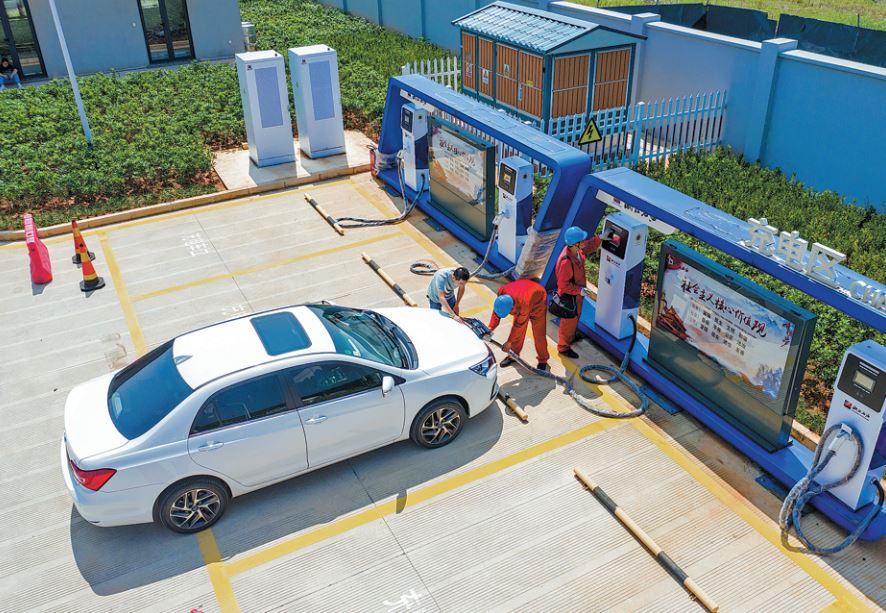Charging pillar operators win investment, eye lucrative market

Charging service providers are catching investors' attention as electric vehicles win the hearts of more car buyers and authorities beef up efforts to expand infrastructure.
TGood, China's largest builder and operator of charging pillars, is scheduled to go public within the year, said Chairman Yu Dexiang on Wednesday.
Its listing plan came after the company completed its financing of 300 million yuan ($46.27 million) in June, which pushed its valuation to around 13.6 billion yuan.
TGood raised 16.5 billion yuan in the first half of the year, with investors including Ceningan Investment and China Reform Holdings Corporation.
The seven-year-old startup based in Qingdao, Shandong province, is not alone. At least six charging pillar builders and operators have won investment in the past two months, and two of them raised over 300 million yuan each, according to National Business Daily.
"A primary cause is that electric cars are selling so well this year, so they demand more charging infrastructure," said Wang Binggang, a senior new energy vehicle expert.
A total of 227,000 electric and plug-in hybrid passenger vehicles were sold in June, a 165.7 percent increase from the same month last year, according to statistics from the China Passenger Car Association.
Their sales totaled 1.09 million in the first half of the year, up 231.5 percent from the same period last year.
"We estimated in May that sales for the entire year could reach 2.4 million," said Cui Dongshu, secretary-general of the association. "Now it seems that the actual sales will be much more."
Statistics from the Ministry of Public Security show that over 6 million electric cars and plug-in hybrids were on Chinese streets by the end of June.
The growing popularity of such vehicles are prompting companies to build more charging pillars. There were 1.87 million charging pillars by the end of June, up 43.9 percent year-on-year, according to the country's charging infrastructure alliance.
Despite their rapid growth, most of the charging facilities are in first-tier metropolises. It means they have vast market potential in smaller cities, and authorities are offering policy support.
In late May, the National Reform and Development Commission and the National Energy Administration promulgated a regulation demanding that all new residential communities must ensure that their fixed parking lots are capable of installing charging pillars.
Wang said another cause of the investors' zeal is that dozens of smaller and ill-run charging pillar companies have gone bankrupt in the past years and those who have survived are excelling in their products and services.
There are 10 companies that each have over 100,000 charging pillars, and they combined have 91.7 percent of the total market in the country.
Of the companies, TGood has the most charging pillars with 219,000.State-owned State Grid comes in second at 196,000, and Star Charge is third at 193,000.
TGood has yet to make a profit, but its losses are getting smaller each year. It lost 136 million yuan in 2018, 111 million yuan in 2019 and 777,000 yuan in 2020.
"The losses were primarily because of the vast investment made in charging pillars. They are not fully used," said TGood Chairman Yu.
The decreasing annual losses, coupled with the fast rise in power consumption, are giving investors confidence.
TGood statistics show that the company's charging network saw power use increase 83 percent year-on-year from January through June, which was 840 million kilowatt-hours of electricity more than the same period last year.
In the preceding four years, its power use totaled 2.70 billion kWh, up 106 percent year-on-year.

